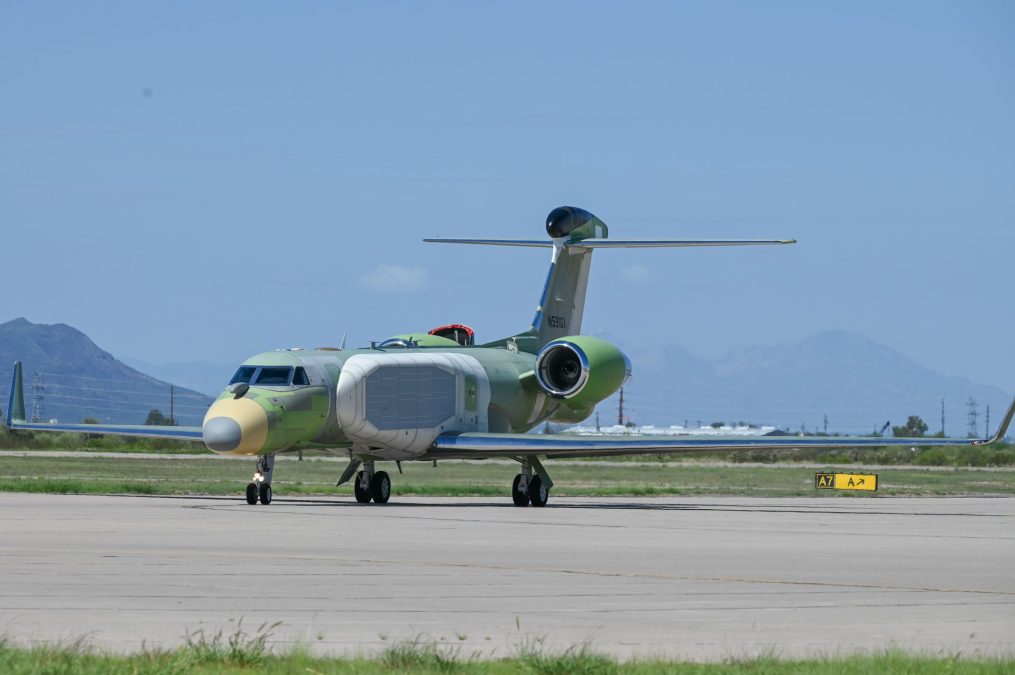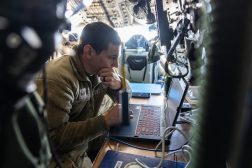Air Force organizing new electronic warfare ‘sprint’

NATIONAL HARBOR, Md. — Following a landmark study four years ago that aimed to set the Air Force on a path toward achieving superiority in the electromagnetic spectrum, the service is again putting the EMS domain in its crosshairs with a new technology “sprint.”
“Electronic warfare has been something that we have tossed around in the Air Force and maybe in some of the other services too, so that it is finally landed on a good spot here on the Air Staff,” Lt. Gen. Leah Lauderback, deputy chief of staff for intelligence, surveillance, reconnaissance and cyber effects operations, A2/6, said Sept. 15 at the annual Intelligence and National Security Summit. “In the A2/6 we’re about to lead a sprint to do some analysis on what is it that we need, what are the gaps, what are the requirements, then how it is that we’d resource them.”
In 2018, the Air Force embarked on a multiyear journey under what it called the Electric Warfare Enterprise Capabilities Collaboration Team to study spectrum superiority. At that time it believed it was falling behind adversaries such as Russia and China.
That study produced three non-materiel solutions, to include the establishment of an EMS superiority directorate within the Air Force headquarters, consolidating EMS services and software programming into a single organization — which culminated in the creation of the 350th Spectrum Warfare Wing — and creating education programs to develop an EMS “warrior ethos.”
Initially, the EMS superiority directorate was housed within the plans and policy division on the Air Staff, A5. It was later moved to the A2/6 under the electromagnetic spectrum superiority directorate, A2/6L.
With much of the dust settled following the 2018 study and creation of new organizations following the recommendations, the A2/6 is looking to move out further.
“The Electric Warfare Enterprise Capabilities Collaboration Team is a few years old and focused much more on strategic-level commendations (organization, prioritization), some of which have been implemented. The new analytic sprint to be pursued over the coming months will be executed through the lens of Secretary of the Air Force’s Operational Imperatives — and will thus be much more focused on operational-level recommendations,” an Air Force spokesperson told DefenseScoop.
Officials in recent years have discussed the need to harness software in a more robust way as a means for not only cost savings, but achieving greater efficiencies.
“I think the name of the game is when we’re looking at electromagnetic warfare capability in the future, it needs to be software driven, artificial intelligence, machine learning, so that we have the ability to respond in a very fast, quick [way], in a lethal and resilient manner,” Brig. Gen. Tad Clark, then-director of electromagnetic spectrum superiority for the Air Force, said at a conference in April. “Those types of emerging technologies are the things that we’ve identified that we’d like to focus in on.”
The Air Force’s top officer, Chief of Staff Gen. Charles “CQ” Brown Jr., has previously said that electronic assets can be cost effective given their repeatable processes.






